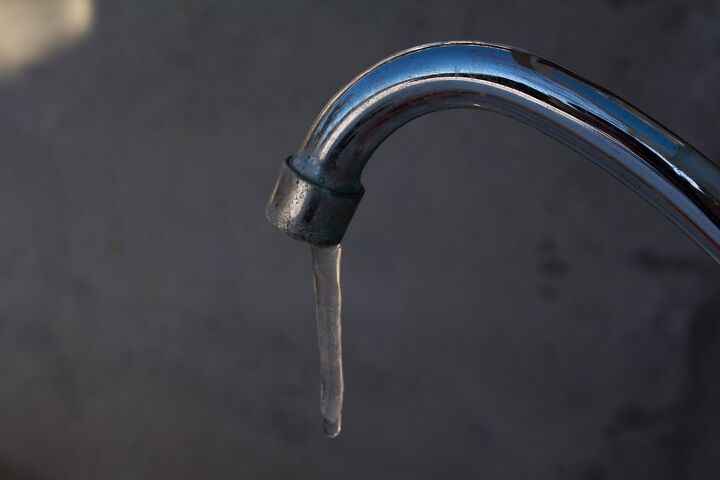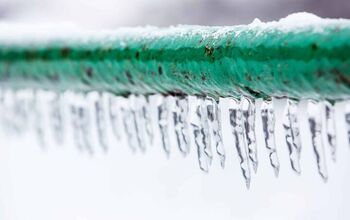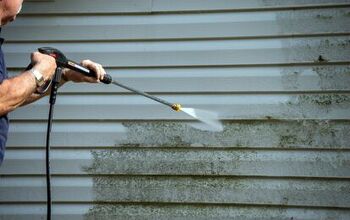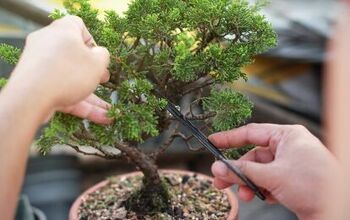How Long Does It Take For Pipes To Unfreeze?

Frozen pipes are an expensive nightmare. Your pipes may unfreeze quickly, but the anxiety that they may burst is awful. So, how long does it take for pipes to unfreeze?
It can take 4-5 hours for pipes to unfreeze if the temperatures rise above 32 degrees Fahrenheit. Wrap your frozen pipes with heat tape for at least 30-60 minutes to unfreeze them. You can also use a blow dryer and space heater to unfreeze pipes, but beware that there will be a mess of water.
Before a cold front sets in, simply open your cabinets so your pipes stay warm. It’s also a good idea to turn your faucets on, so warm water moves through the pipes. Follow along as we explore how long it takes for pipes to unfreeze and highlight how to speed it up.
How Quickly Do Pipes Freeze?
Your pipes can freeze in as little as 6 hours in some cases. That’s especially true if the temperature falls below 20 degrees and stays that way for 6 hours. Pipes that are not insulated can freeze much faster, especially in sub-zero temperatures.
In that case, your pipes may freeze in just 3 hours. Pipe insulation is essential during the fall and winter. Without insulation, you risk your pipes freezing. As the pipes expand because of the ice, pressure will build up, and eventually, the pipes can burst and cause thousands of dollars in damage.
Will Frozen Pipes Thaw On Their Own?
Frozen pipes eventually defrost when the temperature rises. This can be a slow process, unless the temperatures increase dramatically within a day or two. During this time, you run the risk that your pipes will burst.
That’s why we encourage homeowners to do all they can to prevent pipes from freezing. In some cases, it only takes 4-5 hours for pipes to burst, so it’s important to do everything you can to stop it from happening.
How To Defrost Your Pipes
1. Turn On The Faucets
One of the best way to unfreeze your pipes is to run the faucets throughout the house. You don’t even need to use hot water for this process to work. Even cold water should be warm enough to melt the ice and reduce the pressure within the pipes.
Turn on as many faucets as you can and run them for a few minutes at a time. Repeat this process a few times throughout the day and night to alleviate the pressure.
2. Apply Heat
Did you just find a frozen pipe? If so, you must quickly apply heat, so it starts to thaw quickly. Keep in mind that this process can get wet and messy, as melting ice will drip water all over the place.
Keep a mop, towel, and bucket nearby in case things get messy quickly. Point a hair dryer at the pipe, turn it on, and keep it there for a few minutes. Slowly rotate the dryer and aim it at several parts of the pipe to evenly thaw it out.
If that’s not an option, you can also use a space heater. Put the space heater as close to the pipe as possible and run it until water starts to drip. Keep the heater out of the way of any puddles that may form so it doesn’t break or cause an electric shock. Use this method in conjunction with other methods, such as running faucets.
3. Use Heat Tape
Heat tape is a great tool for thawing frozen pipes. Find the frozen pipe and carefully wrap it with heat tape. Make sure you don’t wrap the heat tape too tightly, or you may create more pressure, plus, it’ll be hard to remove.
Keep in mind that it can take between 30-60 minutes for heat tape to warm pipes. Prepare to mop up water, as your pipes may leak if the ice melts too quickly. If possible, lay some towels or a bucket on the ground below the pipe.
4. Open The Cabinets
Open your cabinets to help thaw frozen pipes. This is also a great preventative measure when you’re expecting freezing temperatures. Simply open your cabinets before the temperatures drop below 32 degrees, especially if it gets close to sub-zero temperatures.
This method also works if the pipes are already frozen, but it’s not a quick way to thaw them. The warm air from your indoor heating system will warm up the pipes. This will help alleviate the pressure and hopefully thaw the ice. While this is an effective option, it works better as a preventative measure than when the pipes are already frozen.
5. Patch Leaks
Patching leaks won’t unfreeze your pipes when they’re frozen, but it can prevent the problem from happening. Even small leaks leave your pipes susceptible to freezing quickly. Ideally, you should check your pipes for leaks every few months.
Call a plumber right away to patch the leaks before cold weather approaches. In some cases, you may even need to replace certain sections of the pipes. It’s also important to check for leaks after your pipes freeze and unfreeze.
The ice within your pipes can create tears that cause leaks. Check your pipes after they unfreeze to find leaks. That said, you may see some water because of the condensation from the ice melting. Wipe the pipes down until they’re dry so you can verify where the moisture is coming from.
6. Reach Out To A Plumber
While you can thaw frozen pipes, it sometimes requires professional help. Not everyone has quick access to space heaters and heat tape if a pipe freezes. Reaching out to a professional plumber can save you the trouble, and expenses, of replacing burst pipes.
Not only would you have to pay to replace the pipes, but you would also spend thousands of dollars on water damage repairs.
Why Do Pipes Freeze?
Pipes primarily freeze due to poor insulation. This can also happen even if your pipes are insulated but there are gaps in the insulation. Leaks and cracks in your pipes let in lots of cold air, and they will freeze quickly.
Sadly, pipes can still freeze even if they are well-insulated. It may be unavoidable when temperatures get below 32 degrees if you don’t run the faucet and open your cabinets.
How Much Does It Cost To Fix Burst Pipes?
It costs an average of $500 to fix burst pipes, but it can cost over $1,000. The overall cost depends on how many sections of a pipe burst. However, that doesn’t include the cost of repairing water damage, and that can be expensive.
You can expect to spend at least $700 to repair water damage in your drywall and floors. This can cost thousands of dollars if your flooring, drywall, ceiling, and furniture get damaged.
Summing It Up
Pipes can unfreeze within 4-5 hours if the temperature heats up. However, you can speed the process up if you run a space heater, apply heat tape, or use a hair dryer to warm the pipes. Open your cabinets and patch leaks in pipes before extreme cold weather to reduce the chances they will freeze.
Related Guides:

Nick Durante is a professional writer with a primary focus on home improvement. When he is not writing about home improvement or taking on projects around the house, he likes to read and create art. He is always looking towards the newest trends in home improvement.
More by Nick Durante



























